Contrayerva, the Counterpoison
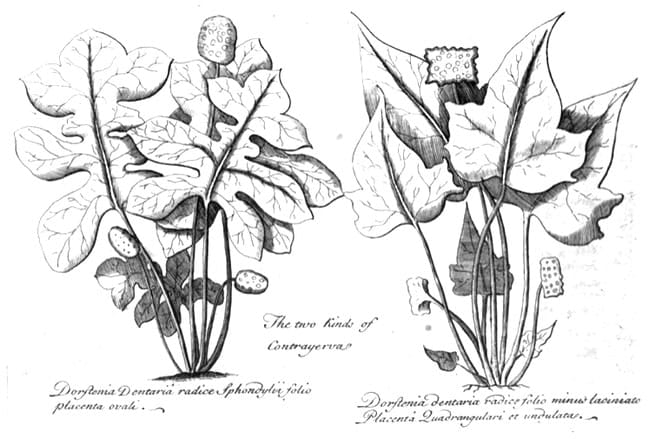 Two types of Contrayerva
Two types of ContrayervaA Complete History of Drugs, Pomet, London, 1748
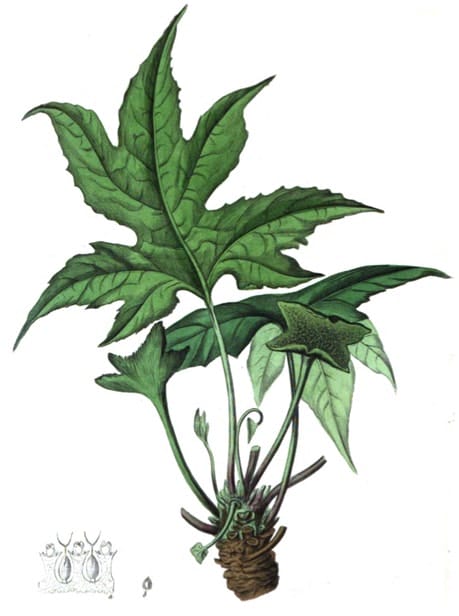
|
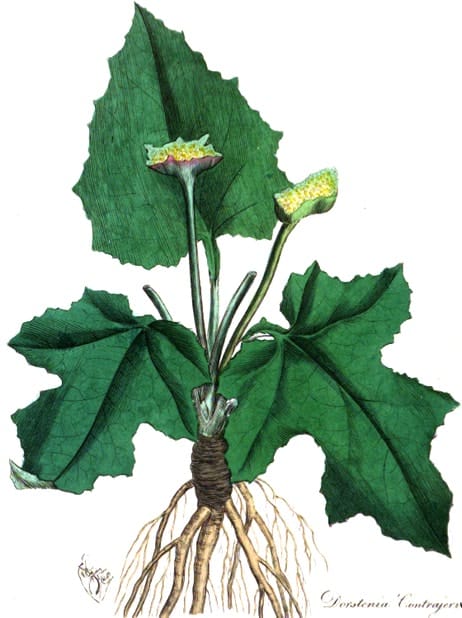
|
|
Medical Botany, Stephenson & Churchill, 1831 |
Medical Botany, Woodville, Hooker, 1832 |
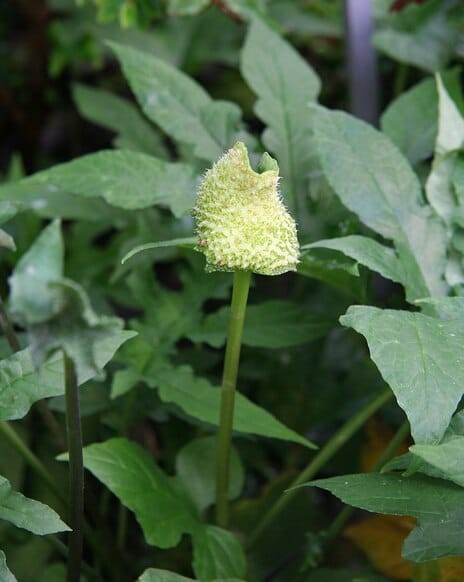 Dorstenia contrajerva
Dorstenia contrajerva(Photo by Michael Wolf) (Wikimedia)
|
Botanical name: Dorstenia contrayerva (syn. D. contrajerva) A number of different types were known and used. Four distinct plants were listed in some older Herbals. Parts used:Root Temperature & Taste:Warm, dry Classifications:3C. ALEXIPHARMICS |
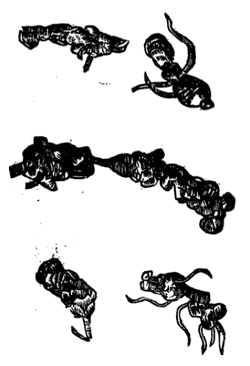 Spanish Contrayerva root
Spanish Contrayerva rootParkinson, Theatrum Botanicum, 1640 |
Uses:
1. Resists Poison, Promotes Sweat;
-Plague; Fevers, Spotted Fevers, Measles and Small Pox; Typhoid Fever, Scarlet Fever
-Snake and Insects Bites
-‘excellent against all Poisons, but sublimate Mercury, but it casts that out by vomit
and sweat: Also it cures Love-powders’. (Schroder)
2. Clears Wind-Damp:
-Arthritis, Rheumatism, Sciatica
3. Benefits Qi:
-traditionally used as a stimulant for low energy and poor stamina
-resists Melancholy
4. Kills Worms
Dose:
Powder: 1–3 grams (half–1 dram); 4–15 grains was said to act as a Sudorific.
Decoction: 3–6 grams (1–2 drams)
Substitute:
1. Pomet (Complete History of Drugs, 1748) said in France, the root of a local plant Asclepias or Hirundinaria was sold as ‘White Contrayerva’.
2. Vincetoxicum was called ‘German Contrayerva’
Main Combinations:
1. Intermittent Fever, Contrayerva with Cinchona (Pomet)
2. Fever, Scorzonera with Lemon seed, decoct, then infuse Cinchona, Contrayerva, strain and add Honey of Elder. (Spanish Pharmacopoeia)
3. Against Poison, Consumption, Small Pox, Arsenic poisoning, Contrayerva with Angelica, Valerian, Virginian Snakeweed, Viper
4. Bezoardic (against Poison and Infection):
i. Contrayerva with Carline Thistle root, Angelica, Elecampane, Burnet Saxifrage, Swallow-wort, Fraxinella, Masterowrt, Valerian (equal parts), Alcohol (20 oz.). (Pharmacopoeia Generalis, 1783)
ii. Contrayerva with Elecampane, Angelica, Zedoary, Valerian, Orange and Lemon peel, Clove, Juniper, Bay berry, Sage, Rosemary
Major Formulas:
Red Hungarian Powder
Cautions:
None noted
Main Preparations used:
-
Extra Info
-
History
|
‘This Root is an Inch or two in Length and half an Inch thick, hard, dense, and bunching out into Knobs or unequal Heads, of a reddish Colour on the outside. or inclining to black, wrinkled, and covered on the Top of the Knobs, as it were, with Scales. It has a great Number of small Fibres shooting from it, whereof same are pretty thick and large, of an hard flexible Texture, and when the Plant is old, are extuberated like the main Root. Within it is of a pale Colour, of a somewhat aſtringent bitterish Taste, with a gentle sweetish Kind of Acrimony, which may be perceived by holding it some Time in the Mouth, and a very gentle aromatick Smell. The tuberous Part of the Root is preferred, and the Fibres, being almost void of Taste and Smell, are rejected. It is called Contrayerva by the Spaniards, on Account of its Quality of resisting Poisons, for the Word in Spanish signifies Counter-Poison. It is undoubtedly, in my Opinion, the Drakena of Clusius, as most Botanists allow, notwithstanding Caspar Bauhine‘s Opinion to the contrary, since it agrees exactly with his Description. He gave it that Name in Memory of his receiving it from the famous Drake, who brought it |
with him when he returned from his Voyage round the World.’ Contrayerva is reckoned sudorific and alexipharmic. Clausius says the Leaves of the Plant are an immediate Poison, for Which the Root, he tells us, is an Antidote, as also for other Poisons: this however, is not to be understood but of such Poisons as coagulate the Humours. It strengthens the Stomach, helps Concoction, discusses Wind, and increases the intestine or fermentative Motion of the Blood. Some assert that it cures malignant Fevers, 0r even the Plague, preferring it to the Bezoar-Stone, Venice Treacle, and all other Antidotes; but, perhaps, they extol its Virtues too much. By its Smell and-Taste it seems t0 be composed of a moderate-Portion of Volatile aromatic oily Salt, somewhat entangled in earthy Parts. Wherefore, I think Herman commends in in malignant Fevers not without Reason, and more especially when they are attended with a Looseness: It is prescribed in Substance to 1 dram and in Decoction to 2 drams. (A Treatise on Foreign Drugs, Geoffroy and Thicknesse, 1749) |
